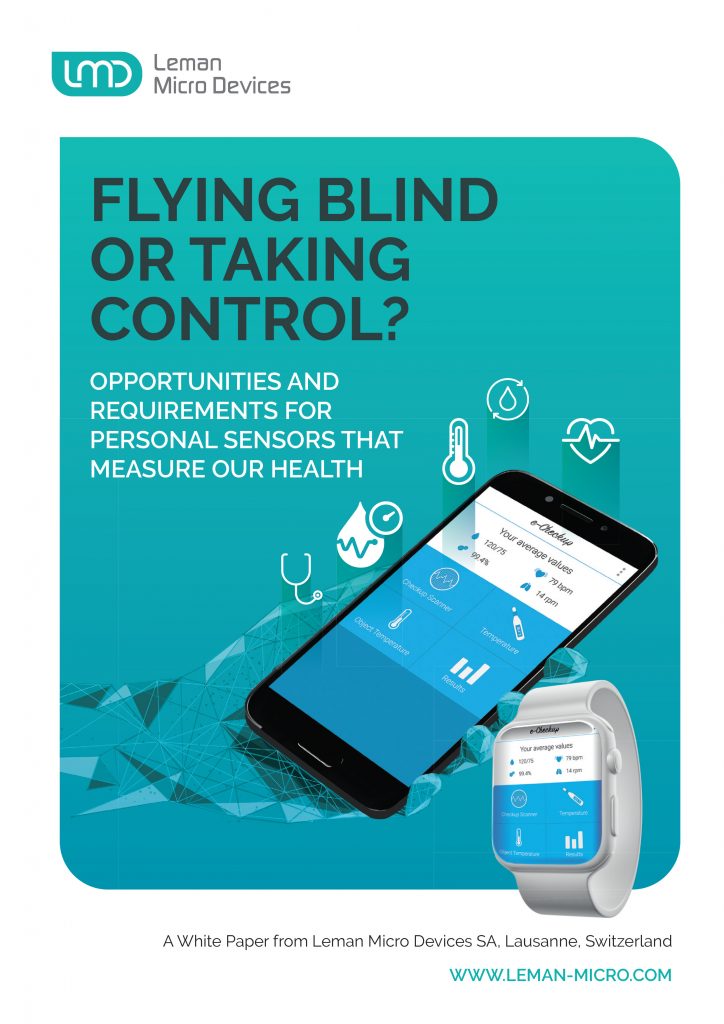White Paper | Format: Digital PDF (3mb)
The first generation of sensors were aimed at tracking fitness, making simple measurements of inputs (what have I done?) such as how many steps have I taken today rather than outputs (how is my health?). The second generation picked off easier health-related targets like pulse rate (heart rate) but have struggled to find a use for the results.
The third generation is emerging, measuring what we really need to know: the Vital Signs, as used by doctors everywhere. These are not toys, they are regulated medical devices: accurate credible and safe.
This White Paper examines such devices using LMD's V-Sensor as a model...
Click Here to Download Your Free Copy
It starts with those basic Vital Signs – blood pressure, temperature, blood oxygen, pulse rate, respiration rate, all of which must be measured to high accuracy.
After that, it considers some of the other clinical measurements that it has been shown to make, including a 1-lead ECG, arterial stiffness (both general and peripheral), Cardiac Output, Aortic Systolic Pressure and the identity of the user. This section ends by showing how it can also find the timing of the valves and muscles of the heart.
The next section speculates on what a fourth generation sensor might do, either one derived from the V-Sensor or following its design principles.
The underlying message is clear – medically accurate and regulated sensors will become ubiquitous, costing only a few dollars and integrated with or connected to the device that almost everyone already carries, the smartphone.
Read more
